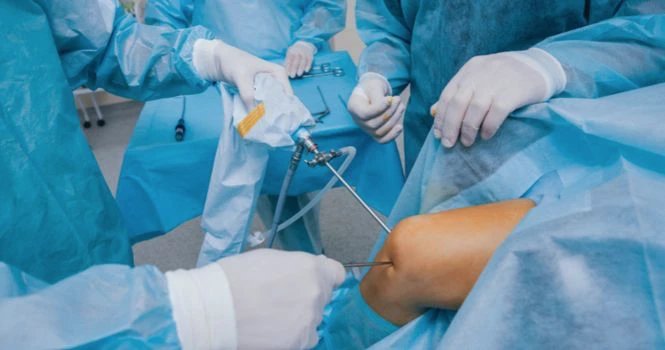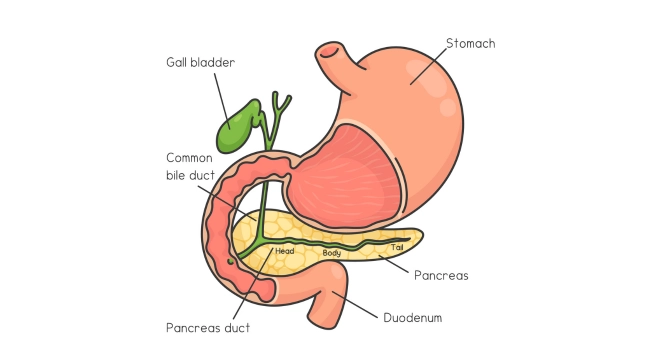Abortion remains a topic of deep contention and complexity worldwide. This article offers a concise overview of abortion procedures and the intricate web of laws governing medical termination of pregnancies in India.
Let’s see some basics first and then move on to the procedures
What is Abortion?
Abortion is the termination of a pregnancy by removing or expelling a fetus or embryo from the uterus before it can survive outside the womb. The term “abortion” can refer to both spontaneous (often termed “miscarriage”) and purposeful termination.
There are several methods of abortion, and the method used often depends on the stage of the pregnancy. Here are the common methods:
1. Medical Abortion: This involves taking medications to end a pregnancy. The most common regimen is a combination of mifepristone (often referred to as the abortion pill or RU-486) followed by misoprostol. These drugs cause the uterus to contract and expel the embryo or fetus.
2. Suction Aspiration or Vacuum Aspiration: This is a surgical procedure done in the first 6 to 16 weeks of pregnancy. It involves numbing the cervix, stretching it open, and then using a suction device to remove the contents of the uterus.
3. Dilation and Curettage (D&C): This is another surgical procedure where the cervix is dilated, and then a curette (A curette is a surgical tool for scraping tissue or debris in biopsies, excisions, or cleanings.) is used to remove the contents of the uterus.
4. Dilation and Evacuation (D&E): Used after 16 weeks of pregnancy, this procedure involves dilating the cervix and then using instruments to remove the fetus and placental tissue.
5. Late-term abortions: These are more complex and are done after 24 weeks of pregnancy. They may involve inducing labor or a combination of D&E and other methods.
6. Induced labor abortion: Sometimes, labor is induced to deliver the fetus, usually in cases of medical necessity or fetal abnormalities.
The decision to have an abortion can be a complex one, influenced by a range of personal, social, economic, and health factors.
Legally, the right to access abortion and any restrictions placed upon it vary significantly from country to country and, in places like the U.S., from state to state.
Abortion has long been a subject of ethical, religious, political, and medical debate.
Supporters of abortion rights generally emphasize a woman’s right to choose and make decisions about her own body, as well as concerns for her health and well-being.
Opponents, on the other hand, often focus on the rights of the fetus or embryo and equate abortion with the taking of a human life.
It’s important to approach discussions about abortion with sensitivity, recognizing that people may have deeply held beliefs and personal experiences that shape their perspectives on the issue.
Is Abortion Legal in India?
Yes, abortion is legal in India under certain conditions. The Medical Termination of Pregnancy (MTP) Act, which was enacted in 1971, provides the legal framework for the provision of abortion services in India. However, there are specific conditions and limits:
1. Gestational Age: The law originally allowed abortions up to 20 weeks of gestation, but amendments have been proposed to extend this under certain conditions.
2. Conditions for Approval: Abortions can be performed if:
- The continuation of the pregnancy poses a risk to the life of the pregnant woman or could cause grave injury to her physical or mental health.
- There is a substantial risk that, if the child were born, it would suffer from such physical or mental abnormalities to be seriously handicapped.
- In cases of rape.
- Contraceptive failure in married couples.
3. Provider Restrictions: Abortions can only be performed by a registered medical practitioner in a facility that has been approved by the government.
4. Consent: If the woman is above 18 years, only her consent is needed. For women below 18 years or women who are mentally ill, consent of a guardian is required.
5. Amendments: Over the years, there have been calls and proposals to amend the MTP Act to make it more aligned with current medical advancements and to address the challenges faced by women seeking abortions. One such significant amendment was proposed in 2020, called the MTP (Amendment) Bill, which sought to extend the permissible gestation age for abortions and introduce other reforms.
Consult your doctor for most recent information pertaining to the laws
Types of Abortion in India
- Medical Abortion
- Surgical Abortion
A. Medical Abortion
Medical abortion in India is a method of terminating a pregnancy using medications rather than surgery. Here’s a detailed breakdown:
1. Medications Used:
- Mifepristone (RU-486): This drug, often referred to as the abortion pill, works by blocking the hormone progesterone, which is required for the pregnancy to continue. Without this hormone, the uterine lining breaks down, the cervix softens, and bleeding begins.
- Misoprostol: Usually taken after mifepristone, this drug causes the uterus to contract and expel the pregnancy. Sometimes, misoprostol can be used alone, but the combination with mifepristone is more effective.
2. Procedure:
- Typically, a person takes mifepristone orally at a health provider’s office.
- After a specified period, usually 24 to 48 hours later, the person takes misoprostol, either orally or vaginally, depending on the protocol.
- After taking misoprostol, the person will experience heavy bleeding and cramping, which is a sign that the abortion is taking place.
3. Effectiveness:
- When used in combination, mifepristone and misoprostol are about 95-98% effective in inducing abortion when taken within the first 10 weeks of pregnancy.
4. Advantages:
- Can be done as soon as the pregnancy is confirmed.
- Doesn’t require surgery or anesthesia.
- Can feel more private as it might be completed at home.
- May seem more natural, like a miscarriage.
5. Disadvantages:
- May cause more pain and longer bleeding compared to surgical abortion.
- Requires multiple visits to the healthcare provider.
- Has a slightly lower success rate than surgical abortion, and if not successful, a surgical abortion may be required.
6. Side Effects:
- Heavy bleeding and cramping are expected outcomes.
- Other side effects can include nausea, vomiting, fever, chills, diarrhea, and headache.
7. Follow-up:
- It’s essential to have a follow-up appointment with the healthcare provider to ensure the abortion was complete and to check for any complications.
Medical abortion is a safe and effective method when conducted under the supervision of a qualified healthcare provider and within the recommended gestational age.
However, its availability, usage protocols, and legal restrictions might vary by country or region.
B Surgical Abortion in India
Surgical abortion involves a procedure to remove the pregnancy from the uterus. The method used often depends on the gestational age and specific medical considerations. Here’s an overview of the main types of surgical abortion:
1. Manual Vacuum Aspiration (MVA) or Suction Aspiration:
- Procedure: This is usually done within the first 6 to 12 weeks of gestation. A syringe is used to apply suction and remove the pregnancy from the uterus.
- Duration: The actual procedure takes about 5-10 minutes.
2. Electric Vacuum Aspiration (EVA):
- Procedure: Similar to MVA but uses an electric pump to create suction. It can be used in the first 6 to 16 weeks of pregnancy.
- Duration: The procedure itself usually takes 5-10 minutes.
3. Dilation and Curettage (D&C):
- Procedure: After dilating the cervix, a curette, a loop-shaped knife, is used to scrape the walls of the uterus and remove the pregnancy. This method is less common nowadays and is often replaced by aspiration methods.
- Duration: 10-15 minutes.
4. Dilation and Evacuation (D&E):
- Procedure: Used after 16 weeks of gestation. The cervix is dilated, and then instruments are used to remove fetal and placental tissue.
- Duration: Varies, but typically 30 minutes or more, depending on the gestation.
5. Advantages:
- Highly effective with a low failure rate.
- The procedure is quick.
- Less bleeding compared to medical abortion.
- Everything is managed by a healthcare provider.
6. Disadvantages:
- Requires a medical procedure, which might include anesthesia.
- Might be perceived as more invasive than a medical abortion.
- There’s a small risk of complications like infection, injury to the uterus, or retained tissue.
7. Side Effects:
- Expected side effects include cramping and spotting.
- Potential for more severe side effects like heavy bleeding, infection, or injury, though these are rare.
8. Follow-up:
- A follow-up appointment is usually scheduled within a few weeks to ensure there are no complications and the procedure was successful.
Surgical abortions are safe when done by a qualified healthcare provider in a sterile environment.
As with any medical procedure, there are risks, but complications are relatively rare. The choice between medical and surgical abortion often depends on personal preference, gestational age, and medical considerations.
Timing and Considerations of Abortion in India
- Gestational Age: The type of abortion method appropriate for an individual often depends on how many weeks have passed since the first day of their last period, referred to as the gestational age. Medical abortions are typically preferred up to 10 weeks, while surgical methods can be used throughout the pregnancy but vary based on the gestation stage.
- Medical Considerations: Certain medical conditions or circumstances might make one method preferable over another. For instance, an intrauterine device (IUD) in place would require removal before a surgical abortion.
- Personal Preference: Some individuals might prefer a method that allows them to be at home (like a medical abortion), while others might prefer the quick completion of a surgical procedure.
- Access and Availability: Depending on the region or country, certain abortion methods might be more accessible than others.
Risks and Safety
- Medical Abortion: While medical abortion is generally safe, there’s a small risk of complications like heavy bleeding, infection, or the medication not working, requiring a follow-up surgical procedure.
- Surgical Abortion: When done by a qualified healthcare provider, surgical abortions are very safe. However, risks (though rare) include infection, injury to the uterus or other organs, and complications related to anesthesia.
- General Risks: With any abortion method, there’s a small risk of complications that might require treatment, such as heavy bleeding, infection, or an incomplete abortion.
Post-Abortion Care
- Physical Recovery: It’s normal to experience bleeding and cramping after an abortion. Over-the-counter pain relievers can help manage discomfort, but it’s advisable to check with a healthcare provider about which ones are safe to use.
- Follow-up Appointment: It’s crucial to attend any scheduled follow-up appointments after an abortion to ensure there are no complications and the procedure was successful.
- Emotional Recovery: People can have a wide range of emotions after an abortion. While many feel relief, others might experience sadness, guilt, or regret. It’s essential to seek counseling or support if needed. There are many organizations and hotlines that offer post-abortion counseling.
- Birth Control: It’s possible to get pregnant very soon after an abortion, so it’s important to discuss birth control options with your doctor, if one is not planning on becoming pregnant.
- Signs of Complications: Seek medical attention if experiencing severe pain, heavy bleeding (soaking two or more pads an hour for two hours), fever, foul-smelling discharge, or continued pregnancy symptoms.
Abortion, whether medical or surgical, is a medical procedure, and like all procedures, it carries some risks. However, when performed by trained professionals under the right conditions, it is a safe procedure. Proper post-abortion care and follow-ups are crucial to ensure the health and well-being of the individual.
Frequently Asked Questions
What is abortion in medical terms?
In medical terms, abortion refers to the termination of pregnancy before the fetus is viable, or capable of independent life. It can be spontaneous (often referred to as a miscarriage) or induced (intentionally terminated).
What is the meaning of pregnancy termination?
Pregnancy termination is the medical or surgical process of ending a pregnancy. This can be done for medical reasons (when the pregnancy poses a risk to the mother’s health) or elective reasons (chosen by the individual due to personal, social, or economic circumstances).
What are the classifications of abortion?
Abortion can be classified in various ways, including:
Spontaneous vs. Induced:
- Spontaneous abortion (miscarriage) occurs naturally without any medical interventions.
- Induced abortion is intentionally terminated.
By gestational age:
- Early abortion (usually within the first 12-14 weeks of pregnancy).
- Late abortion (after the point of fetal viability).
Based on events leading to abortion:
- Threatened abortion
- Incomplete abortion
- Complete abortion
- Missed abortion
- Septic abortion
What is threatened abortion?
A threatened abortion refers to vaginal bleeding during the early stages of pregnancy, with the cervix remaining closed. It’s essentially a warning sign that a miscarriage might occur, but it doesn’t always lead to a miscarriage. During a threatened abortion, the fetus is usually still viable, and with proper care, the pregnancy might continue to term.
What can accidentally cause a miscarriage?
Miscarriages can occur for a variety of reasons, many of which are not necessarily controllable. Common causes or factors include:
- Genetic abnormalities: A significant proportion of early miscarriages are due to chromosomal abnormalities in the fetus.
- Hormonal imbalances: Conditions such as polycystic ovary syndrome (PCOS) or thyroid disorders can impact pregnancy.
- Physical issues: Uterine abnormalities or cervical insufficiency can cause miscarriages.
- Infections: Certain infections can increase the risk of miscarriage.
- Certain medications and drugs**: Some medications, illicit drugs, and high levels of caffeine can elevate the risk.
- Environmental toxins: Exposure to certain chemicals and radiation.
- Severe malnutrition.
- Trauma: Significant physical trauma can pose risks, but routine activities like exercising or having intercourse typically do not cause a miscarriage.
- Advanced maternal age: Women above the age of 35 have an increased risk of miscarriage.
- Chronic conditions: Diseases such as uncontrolled diabetes, lupus, or kidney disease can increase risk.
- Lifestyle factors: Heavy smoking, drug use, and excessive alcohol consumption can contribute to the risk of miscarriage.
However, it’s essential to note that many miscarriages, especially those in the first trimester, often occur without a clear identifiable cause.
Is abortion another word for miscarriage?
No, abortion is not another word for miscarriage. While both terms refer to the termination of a pregnancy, abortion is a broader term that encompasses both intentional termination (induced abortion) and unintentional termination (spontaneous abortion or miscarriage).
How many weeks is 5 months pregnant?
Five months pregnant is approximately 20 to 22 weeks.
Is termination of pregnancy allowed?
The allowance of termination of pregnancy varies by country and jurisdiction. In many places, termination is allowed under certain conditions, while in others, it might be heavily restricted or prohibited.
What to expect at 5 months pregnant?
At 5 months pregnant, one can expect the baby to be more active, and movements or kicks might be felt. The abdomen will be more noticeably protruding, and there may be symptoms like backaches, leg cramps, and possibly the appearance of stretch marks. Some women also experience nasal congestion, occasional dizziness, and changes in skin pigmentation.
What is C and D in abortion?
C and D in abortion refers to “Curettage and Dilation,” a surgical method often used for miscarriage management or termination of pregnancy. This procedure involves dilating the cervix and then scraping the uterine lining to remove pregnancy tissue.
What causes miscarriage in 5 months pregnancy?
Miscarriages during the second trimester, or around 5 months, can be caused by a range of factors including chromosomal abnormalities, maternal infections, structural abnormalities of the uterus or cervix, placental problems, and certain underlying maternal health conditions like uncontrolled diabetes, high blood pressure, or thyroid disease. Lifestyle factors, such as smoking, drug use, and excessive alcohol, can also contribute.
What color is miscarriage blood?
Miscarriage blood can vary in color from brown to bright red. Brown blood suggests it’s older, while bright red indicates fresh bleeding. The blood may be accompanied by clots, tissue fragments, and, in later-stage miscarriages, possibly fetal tissue.
Can stress cause a miscarriage?
While routine daily stresses are not typically linked to miscarriage, extreme levels of stress might increase the risk. However, most miscarriages are caused by factors out of one’s control, such as chromosomal abnormalities in the fetus.
How long does a miscarriage take?
The duration of a miscarriage can vary. Some miscarriages are over in a few hours, while others may take several days to complete. The process and duration can depend on the gestational age of the pregnancy and individual factors.
Is it possible to lose a baby at 2 weeks?
Yes, it’s possible. Many miscarriages occur very early in pregnancy, often before a woman even realizes she’s pregnant. These are sometimes referred to as chemical pregnancies.
Which sleeping position can cause miscarriage?
There’s no scientific evidence to suggest that any sleeping position can cause a miscarriage, especially in the early stages of pregnancy. However, as pregnancy progresses, especially in the third trimester, many doctors recommend avoiding lying flat on the back for extended periods to ensure optimal blood flow to the fetus.
Can papaya cause miscarriage in early pregnancy?
Unripe papaya contains an enzyme called papain, which can cause contractions of the uterus. In high amounts, it is believed to potentially lead to a miscarriage, especially in early pregnancy. However, fully ripe papaya does not contain these enzymes and is generally considered safe to eat during pregnancy.













